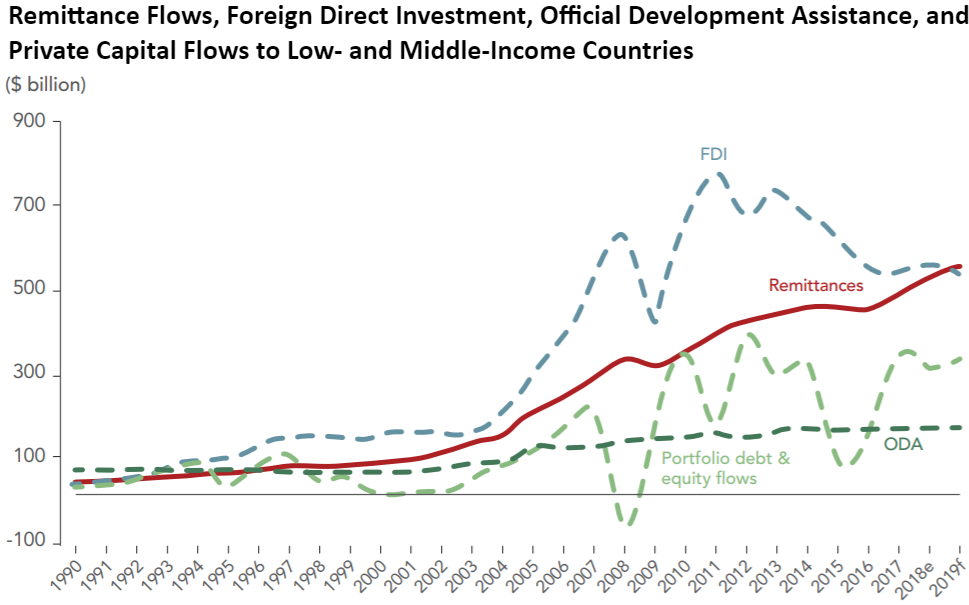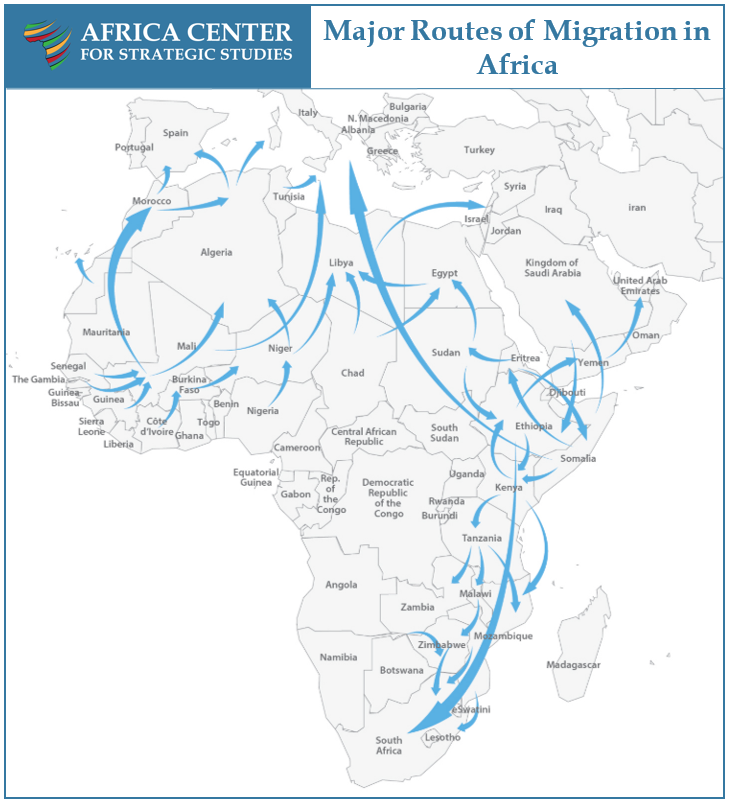- African migrants continue to be on the move, with an average of 78,000 clandestine African migrants per year intercepted on Europe’s southern shores between 2014 and 2019.
- The migration flow to Europe is just one avenue of movement, however. On average, roughly 1 million African economic migrants have moved to other parts of the continent each year during the same period of time.
- The leading countries of origin of African migrants bound for Europe have shifted to North Africa in the past 6 years.
- The migration journey continues to be treacherous. There have been over 17,000 deaths recorded in the Mediterranean since 2014. The UN believes that overland clandestine migration in Africa is twice as deadly as crossing the Sea.
- Whether they are transiting to Europe or other parts of Africa, African migrants who cannot move through legal channels travel clandestinely and are more likely than not to experience some form of abuse on their journey and at their destination.
- Clandestine migration in Africa has created a lucrative market for human smuggling—estimated to be worth $765 million annually along the Trans-Sahara route alone. A significant share of this flows to criminal and violent extremist groups, who use the funds to undermine and destabilize governments.
- Africa is experiencing these clandestine migrant flows as its young and growing population is increasingly moving to cities and abroad to seek education and work opportunities. The dynamism of migration flows, therefore, is likely to continue into the foreseeable future.
- Migration can bring considerable benefits – both through the increased availability of young workers and for the remittances they contribute to economic development in their countries of origin. Remittances have become the largest form of financial assistance to developing countries. On the African continent they comprised an estimated $86 billion in 2019, $4 billion more than 2018.

Sources: World Bank staff estimates. World Development Indicators, and International Monetary Fund (IMF) Balance of Payments Statistics.
More on: Africa Security Trends Migration



